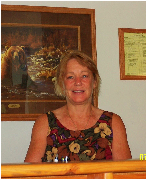In late spring all up and down the northern Pacific coast, most breeds of salmon begin to move out from their individual estuaries and head into the open sea. Coho, Chinook, Pink, Chum and Sockeye species all make the voyage with slight variations. It seems the last place they should go, with natural enemies on every side, yet an instinctive confidence takes the small fish, called, "juveniles" further and further from their birthplace.
Once the salmon are well into the Pacific depths they set their directions north and follow the coastline up past British Columbia and Alaska...then into the North Pacific...even as far as Japan. Thousands of miles from home they feed, travel and grow for three to five years. The most important thing they are gaining is strength for the truly unbelievable undertaking still ahead. And even strength won't be enough for most of them.
Aside from natural hazards such as larger predator fish, their food source has to be constant and adequate. The zooplankton and bait fish they feed on require a narrow range of ocean temperatures and salinity to survive. If the surface temperature of the water should rise even a few degrees the zooplankton supply would drop off and this would have serious consequences for the salmon
Although there are constant trials and snares, some fish make it to their full maturity, and are pulled closer and closer to a confrontation with the miraculous.
Subscribe to:
Post Comments (Atom)








No comments:
Post a Comment